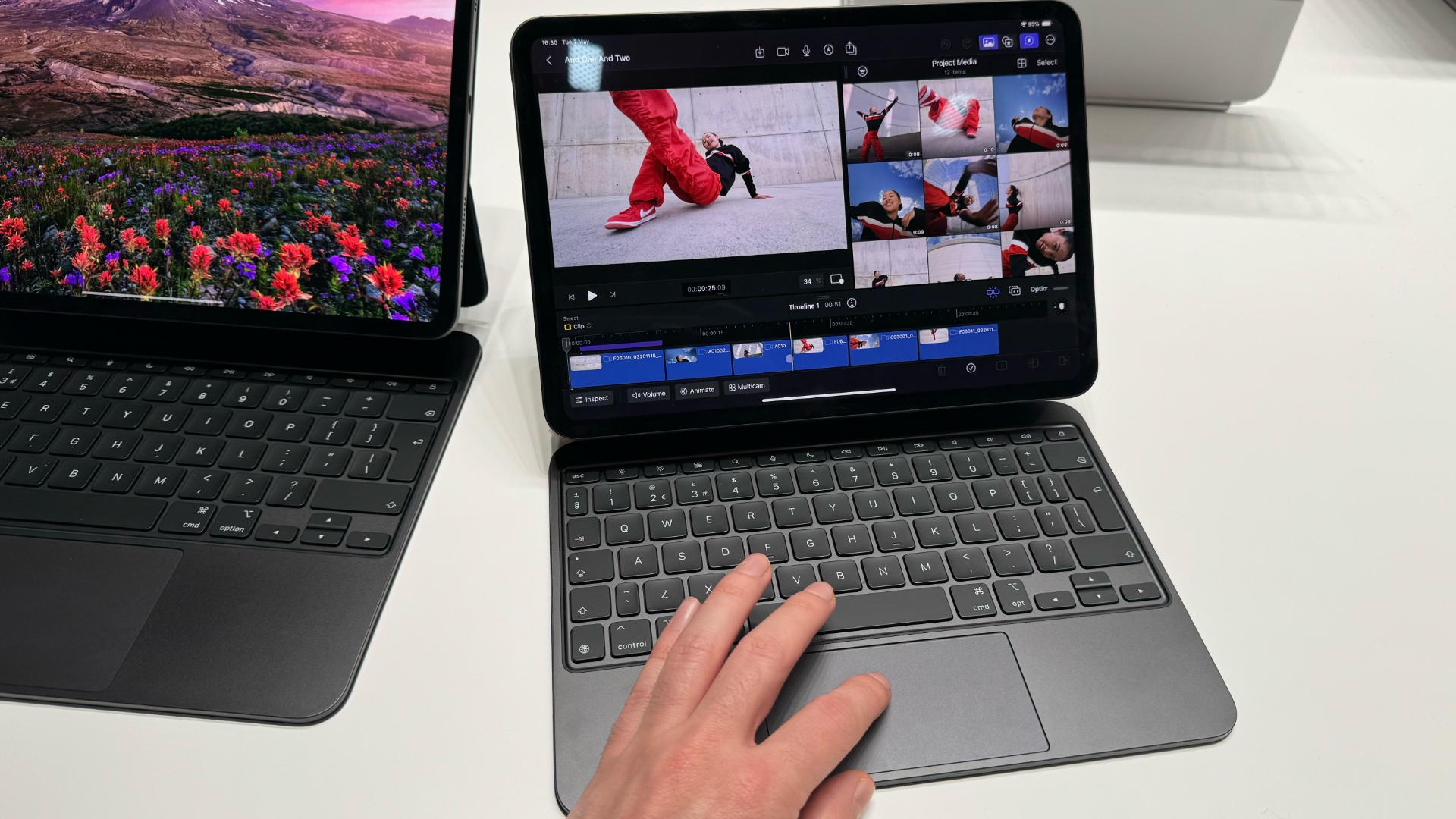On May 15, after almost two years of silence on iPads, Apple will drastically simplify its family of tablets. Goodbye iPad 9 in Lightning, the iPad 10 is now the cheapest iPad (439 euros). Alongside it, a slightly less expensive iPad mini (609 euros) and, above all, a new iPad Air (M2, 719 euros) and a new iPad Pro (M4, 1,219 euros). The high-end model takes the opportunity to widen the gap on the Air version, with several new features in the Apple environment.
OLED, finesse and keyboard… The almost flawless iPad Pro
At first glance, the finesse of the new iPad Pro is obvious. Apple is not lying when it says it is “the finest product in its history”. The 5.1 millimeters thickness of the large iPad Pro is mind-blowing when you hold an iPhone 15 Pro Max with your other hand, especially since the tablet also seems very light despite its size. The fact that the USB-C port manages not to stick out is almost a miracle.
Advertisement
In a way, this new iPad Pro rewards several years of research in miniaturization. It remains to be seen whether the autonomy will hold up with this format, since such great finesse is incompatible with a thick battery. Regardless, Apple seems to have reached a new milestone with this product. Should we expect future Macs, iPhones and Watches this thin?
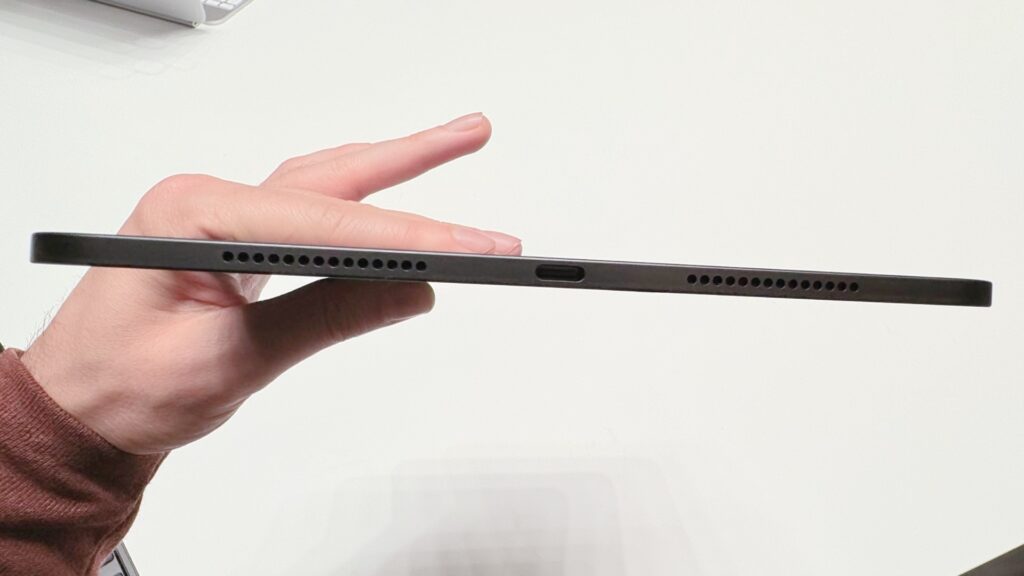
The other slap is obviously the screen, the first in OLED for an Apple tablet.
As on Samsung's high-end tablets, the OLED screen drastically improves the use of the product. Black becomes perfectly black, with pixels independent of each other.
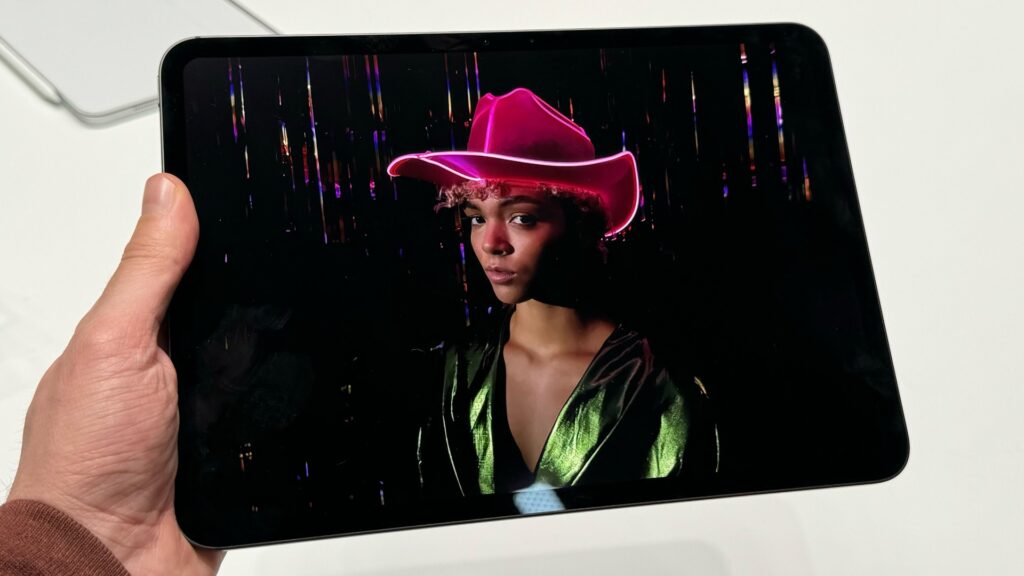

The difference in brightness from one part of the screen to another is striking and immediately positions the iPad Pro as the best way to watch a movie or play games in the Apple ecosystem (with the Vision Pro perhaps, but with 600 grams less on the face). The brand promises a brightness of 1,000 nits, which is very high for an OLED screen of this size. If the promise is kept, we may have difficulty using a Mac, LCD (MacBook Air) or mini-LED (MacBook Pro), after having tasted the OLED of the iPad Pro.
Advertisement


To simplify its range, Apple no longer speaks of 11-inch and 12.9-inch screens, but of 11-inch and 13-inch screens. A good choice that immediately positions the iPad Pro as an alternative to the MacBook Air, with rounded sizes.
On the other hand, and at the risk of complicating the range, Apple is introducing a new screen variation. Nano-textured glass, sold as an option on iPad Pros with 1 TB or 2 TB of storage, adds a matte coating to Apple's splendid OLED screens. Enough to eliminate almost all reflections with a rendering close to a smoother, which reminds us a lot of the MacBook Pros of the 2000s. At 2,079 euros minimum, this unfortunately remains an option inaccessible to ordinary mortals (and it is without probably more suitable for a MacBook, since you don't touch its screen).


Another good idea with this new iPad Pro: the webcam finally rotates to the right side. Several years after confinement, Apple finally understood that the webcam placed on the left of the screen was not practical. All of its iPads therefore make this change (the iPad 10 did so in 2022).
Finally, the keyboard finally becomes very good. After a very gadgety Smart Keyboard and a Magic Keyboard close to a Mac experience, but too plastic and with fewer keys, the new Magic Keyboard of the iPad Pro finally introduces an experience worthy of a MacBook Air, with aluminum and real function keys (still count between 349 and 399 euros for this accessory, which adds a lot of weight to the iPad Pro).
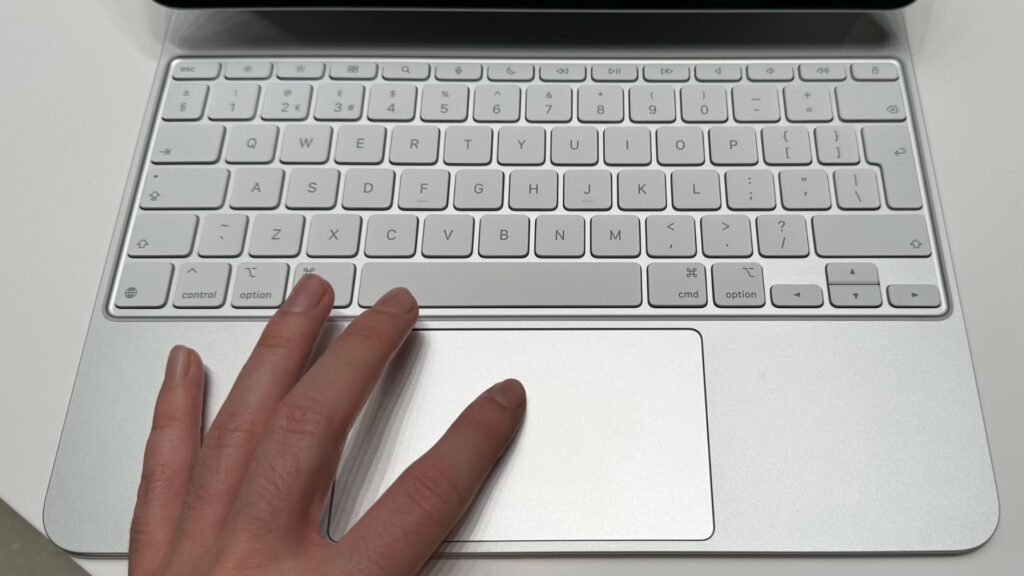

We also played briefly with the new Apple Pencil Pro, which has plenty of exciting new features, but we'll need more time to give an opinion.


The M4 chip opens the door to great advances, but they are not there yet
Another quick mention: the new M4 chip. Apple makes a surprising choice only six months after announcing the M3 generation by skipping a generation on the iPad Pros, which go from the M2 chip to the M4 chip. The reason lies in two letters: “AI”. The brand offered the press some demos of future versions of Final Cut Pro And Logic Pro with generative AI functions, but half-heartedly admits that this is only half the story. The M4 chip will be used for something else, probably in iPadOS 18.
Precisely, it is this aspect that leaves us wanting more. Once again, the iPad Pro is the device with the best hardware at Apple. But, once again, it is not under macOS but under iPadOS. Today's limits are therefore the same as those of yesterday, hoping that tomorrow's advances, in artificial intelligence but not only, will free the tablet.


In short, we would dream of replacing a MacBook with the ultra-thin OLED screen of the iPad Pro, but this remains subject to conditions. The iPad Pro 2024 may be a much sexier device a month from now, after WWDC on June 10.
The iPad Air is all about size
Finally, we quickly played with the iPad Air which, with a few exceptions (new 13-inch format, horizontal webcam and M2 chip) changes very little. In a way, it's not so bad. The lineup is more cohesive now that the iPad Pro is truly better on many levels.
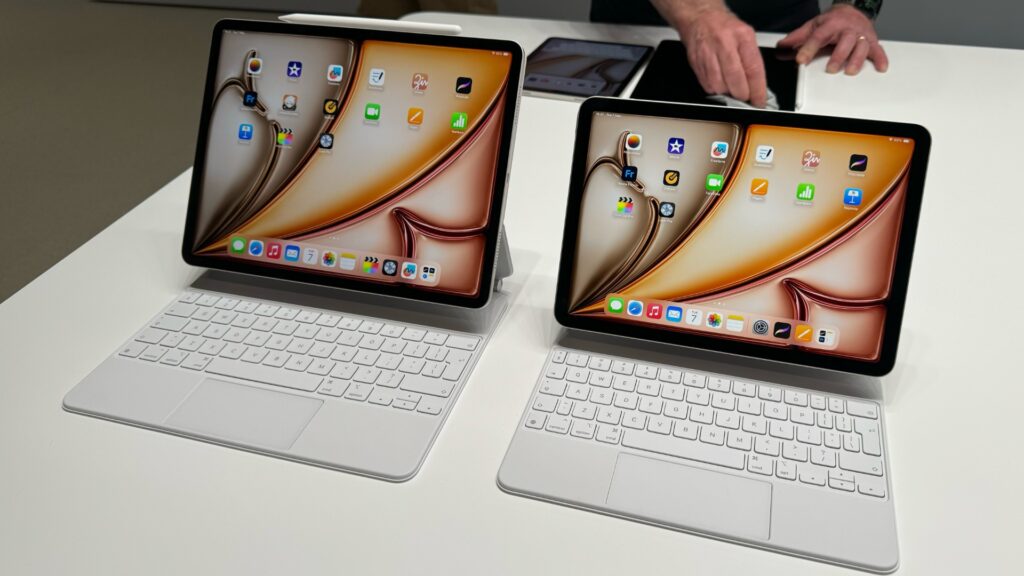

In addition to iPads, Apple is also simplifying its Pencil range. The Apple Pencil Pro (Air and Pro 2024 compatible) and the Apple Pencil USB-C (iPad 10 and older iPads) should be less annoying to users looking for a stylus. The rest in our tests.
